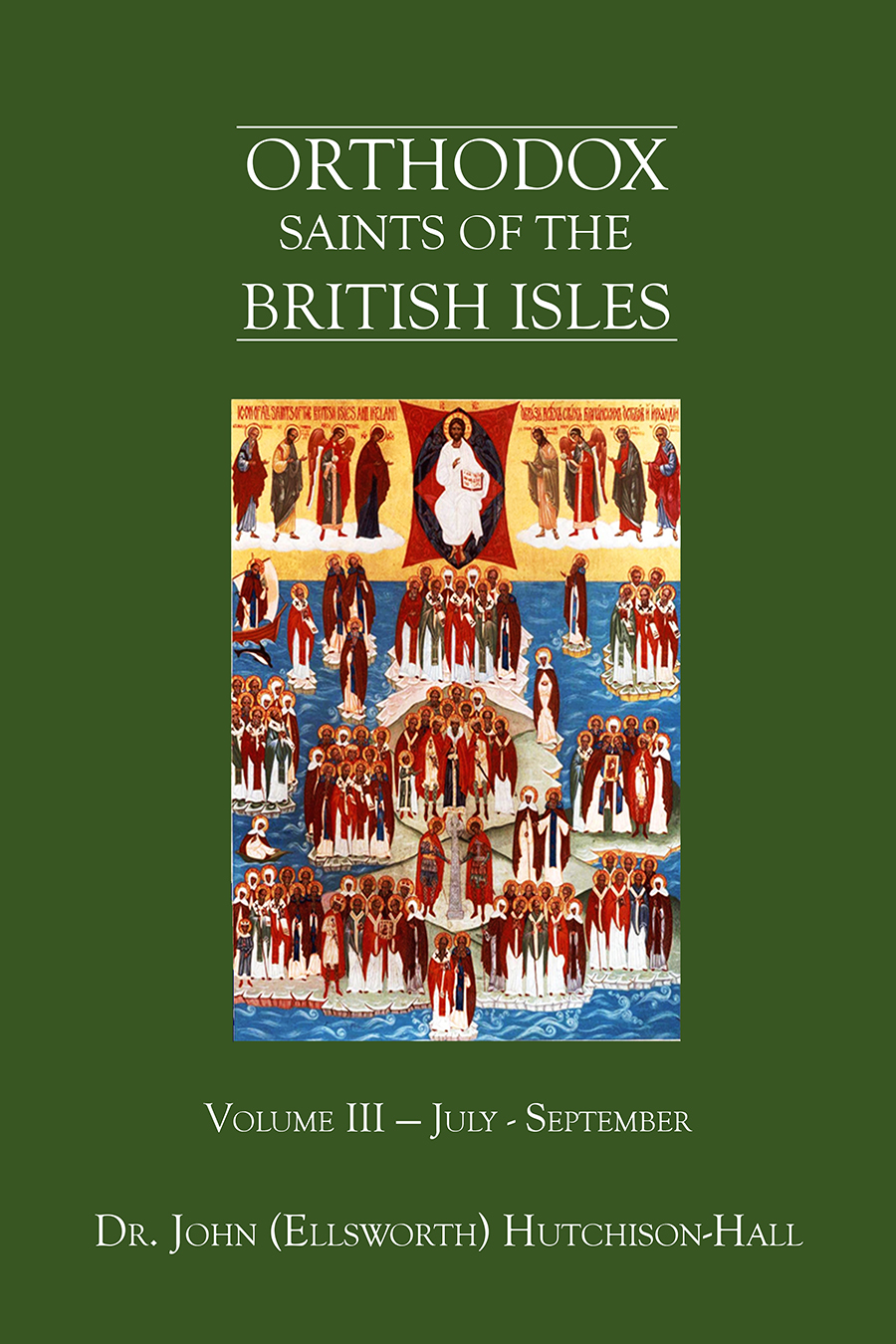
Orthodox Saints of the Pre-Schism
See of Rome
19th July (NS) — 6th July (OS) 2023
DOMINICA of CAMPANIA, (Date Unknown), a maiden martyred, during the Diocletianic Persecution (303–313) for destroying pagan idols. Her relics are enshrined in the Cathedral of St. Mary of Romania in Tropea, Calabria, Italy
GOAR of AQUITAINE, a priest from Aquitaine (south-western France), who following several years as a parish priest left Aquitaine and to live as a hermit near Oberwesel on the Rhine. The present-day town of Sankt Goar-Oberwesel in Rhineland-Palatinate, Germany grew up around the site of his hermitage. St. Goar reposed circa 575.
MONENNA (DARERCA), an early Irish ascetic and abbess believed to have received monastic tonsure from St. Patrick of Ireland (17th March). St. Monenna was foundress of several monasteries in Scotland and England, as well as, one in Faughart, Co. Louth, Ireland. She finally settled at Cill Shleibhe (Killeavy), Co. Armagh, Ulster, with eight virgins and one widow, who brought her son, who went on to become a bishop. This community lived a semi-eremitical life. St. Monenna reposed at Cill Shleibhe in 518 and is believed to have been buried on the northern side of the cemetery at Killeavy Old Church. This site is marked by a large granite stone measuring 2.1 by 1.5 metres (6.9 by 4.9 feet). There is also a shrine nearby at the site of her holy well.
NOYALA of BRITTANY, (Date Unknown), believed to have been a native of Britain, St. Noyala was beheaded by robbers at Bignan in Brittany (northern France). She is one of the saints classed as a cephalophore, or head-carrier, as according to tradition, St. Noyala carried her head from the place of her martyrdom some 25 km (16 mi) north to Pontivy where the Sainte-Noyale Chapel is now located. St. Noyala is also remembered in Cornwall, England, by the name of the village of St. Newlyn East.
ROMULUS of FIESOLE and COMPANIONS, according to tradition St. Romulus was ordained by the Apostle Peter (29th June) and charged with evangelising the area around Florence (Tuscany, central Italy). St. Romulus is counted as the first Bishop of Fiesole, just outside of Florence, and was martyred with several companions during the reign of the Emperor Domitian (r. 81–96).
SEAXBURH (SEXBURGA, SAXBURGH) of ELY, the daughter of Anna, King of the East Angles (r. 635/6–c. 654), sister of SS. Æthelthryth (23rd June), Æthelburh (7th July) and Wihtburh (8th July) and half-sister of St. Sæthryth (10th January). She married King Eorcenberht of Kent (r. c. 640–664) and amongst their children were SS. Eormenhild (13th February) and Eorcengota (21st February). Following the repose of her husband in 664, St. Seaxburh received monastic tonsure and founded the abbey at Minster-in-Sheppey, serving as its first abbess. In 679, she retired and moved to her sister St. Æthelthryth’s monastery at Ely, where she was chosen Abbess upon the repose of her sister. St. Seaxburh served as Abbess of Ely until her repose circa 699.
TRANQUILLINUS of ROME, said to have been brought to Christ by St. Sebastian (20th January). St. Tranquillinus was the father of SS. Mark and Marcellian (18th June). He was found praying at the tomb of the Apostle Paul (29th June), and stoned to death circa 288.
Get your copy of Orthodox Saints of the British Isles today.
Available at Amazon or your favourite e-bookstore.
AMBROSE AUTPERT (AUTPERTUS), a Frankish diplomat posted to Italy. There he entered the Abbey of St. Vincent of Volturno (abbazia di San Vincenzo al Volturno) in present-day southern Italy. St. Ambrose received monastic tonsure and later served as its Abbot. He reposed circa 778.
AUREA (AURA) of CÓRDOBA, born in Córdoba (southern Spain), St. Aurea's parents were Muslims and raised her in the Muslim faith. St. Aurea became a Christian after the death of her husband, and then received monastic tonsure. Her parents reported her conversion to the Moorish authorities who subsequently arrested her. St. Aurea refused to renounce Christ, and as a result was martyred by beheading in 856.
FELIX (FELICINUS) of VERONA, (Date Unknown), a Bishop of Verona (northern Italy), who has been listed in martyrologies since time immemorial, though there is no information on his life extent.
JEROME of PAVIA, the Bishop of Pavia in Lombardy (northern Italy) from 778 until his repose in 787. There is no further information on his life.
JUSTA and RUFINA, two sisters in Seville (southern Spain) who were martyred in 287, at the outset of the Diocletianic Persecution. They are greatly venerated in Spain.
MARTIN of TRIER, a third century Bishop of Trier in the present-day German state of Rhineland-Palatinate. Though long-standing tradition and multiple martyrologies describe him as a martyr, there is no record of his actual martyrdom. Circa 210 is given as the year of his repose.
SYMMACHUS, elected 51st Pope of Rome in 498, St. Symmachus had to contend with an anti-pope supported by the Byzantine Emperor Anastasius I Dicorus (r. 491–518). Councils were convened to investigate his actions with a view to deposing him, and there even was rioting against his papacy. Nevertheless, he proved to be a capable prelate, and did much to improve discipline of the Church. St. Symmachus reposed on 19th July, 514.
Prior to the Schism the Patriarchate of Rome was Orthodox, and fully in communion with the Orthodox Church. As Saint John of Shanghai and San Francisco +1966 said “The West was Orthodox for a thousand years, and her venerable Liturgy is far older than any of her heresies”.
Details of British Saints excerpted from Orthodox Saints of the British Isles.
Details of continental saints from these sources.
In many cases there are several spelling versions of the names of saints from the British Isles. I use the Oxford Dictionary of National Biography version as the primary version with the more prevalent version in parenthesis e.g. Ceadda (Chad) of Lichfield.

